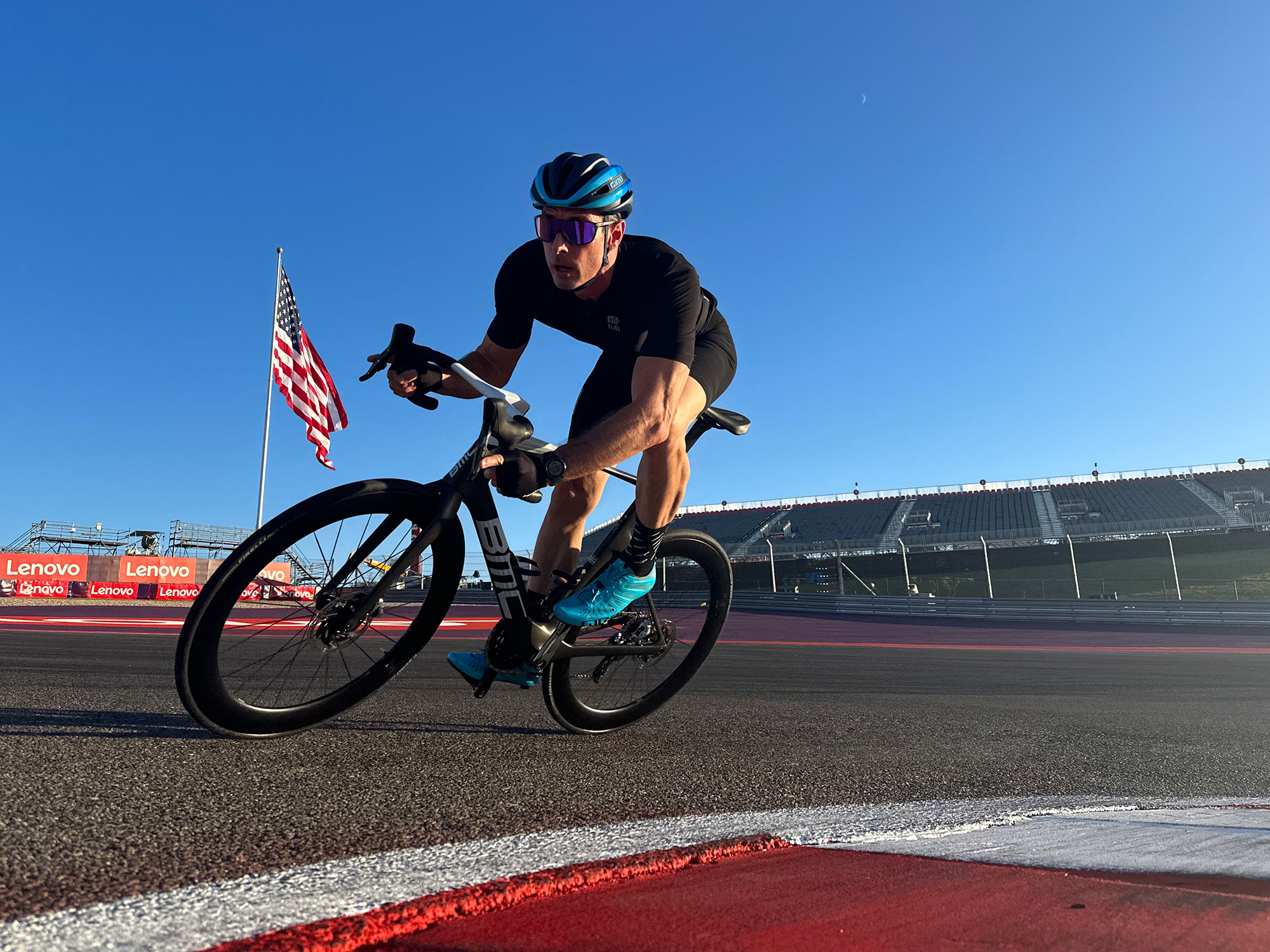The BMC Teammachine R launched in October with the ambitious goal of being the perfect road racing bike. While I didn’t get to test it in a race, I did travel to the Circuit of the Americas race track in Austin, TX, to join BMC for test laps, plus a day of around-town riding on my own. Below are my impressions of the bike, but first, a bit about how it came to be.
Why did BMC partner with Red Bull?
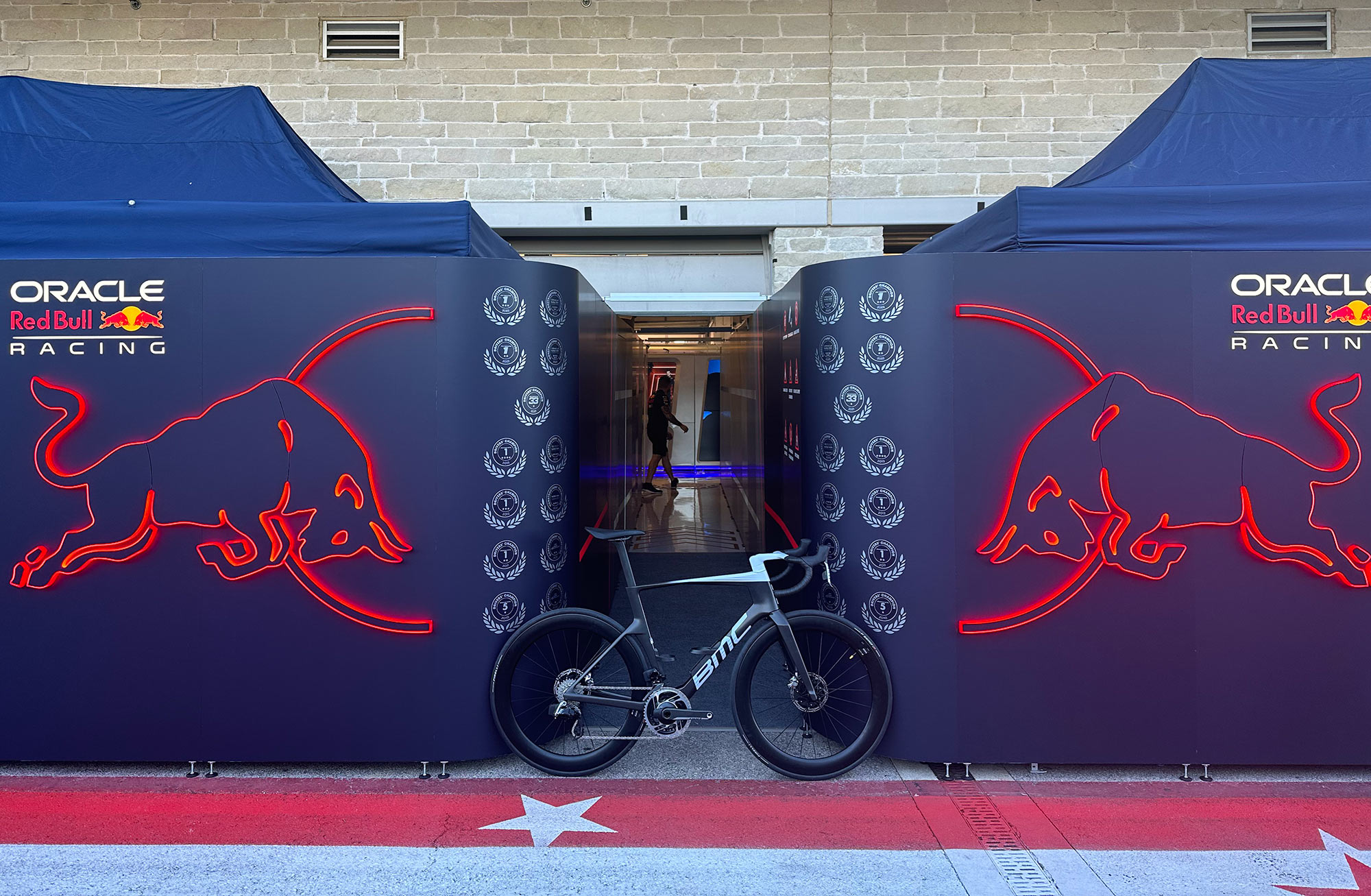
BMC’s racers wanted a bike that could handle the cobbles as well as the climbs, flats, and sprints, giving them a one-bike quiver for most races and stages. Having already collaborated with Red Bull Advanced Technologies (RBAT) to create their Speedmachine TT/Tri bike, they decided to leverage the beverage brand’s F1 experience and tech for this, too.
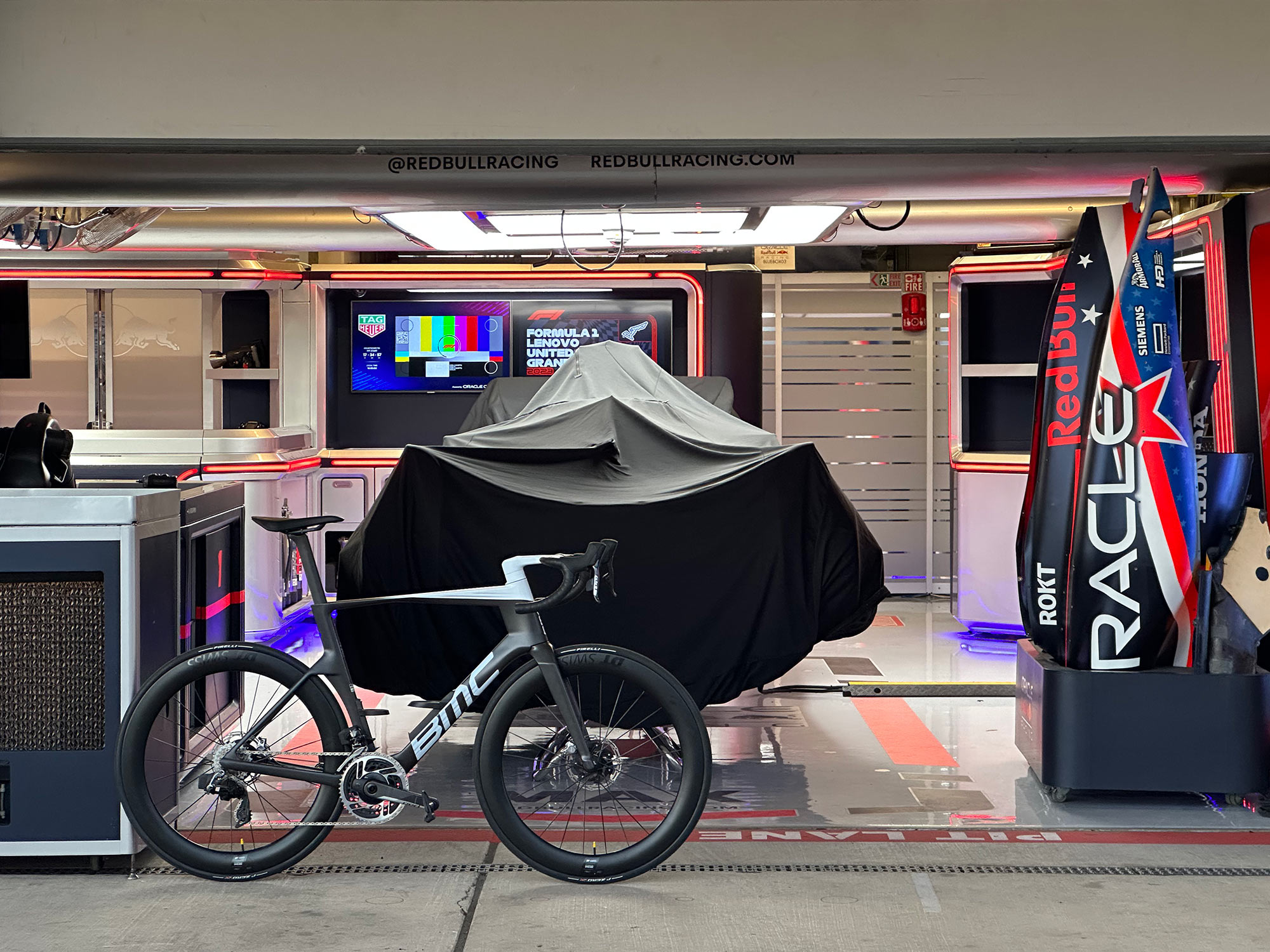
So BMC went to Red Bull and said they had three criteria:
- It had to be as aero as their Timemachine
- It should have the same feel as their Teammachine SLR
- It had to be really light
RBAT gave them more computer simulation power, letting them test more tube shapes and layup schedules. Once Red Bull’s computers had their version of an ideal bike, BMC came in and tweaked it into something that could actually be manufactured at scale.
Drawing it Up
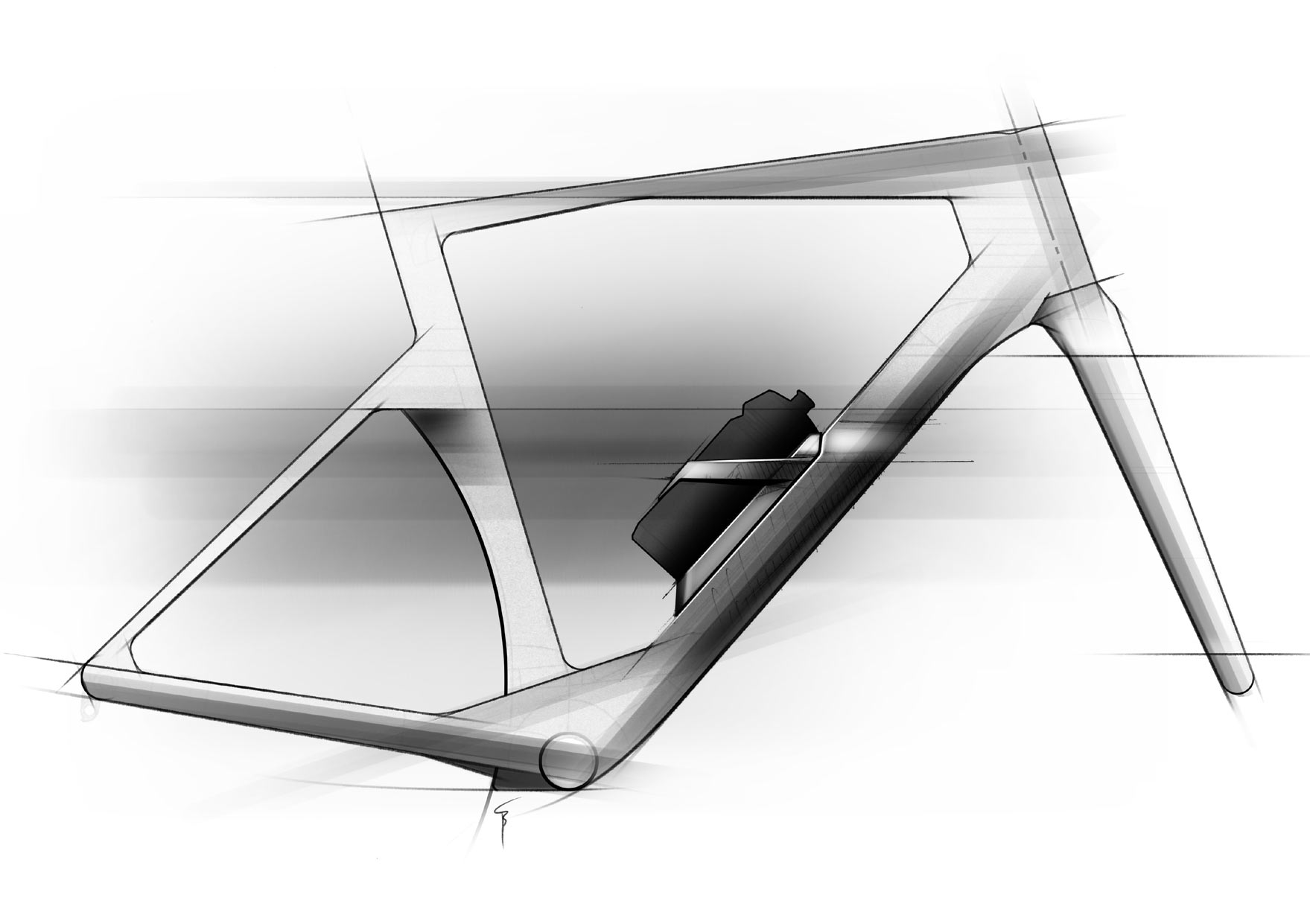
The initial renderings showed a more bulbous head tube, but it would have been heavier than the slimmer profile with flatter sides, because (BMC says) rounded, bulbous shapes need more carbon than flat shapes, at least in that particular application. And they needed it to “look” like a BMC, after all.
The end result is a bike that’s 19% faster than the SLR without a rider, 3.5% faster with rider, and 1.9% faster than Timemachine Road, all at 0° yaw in the wind tunnel.
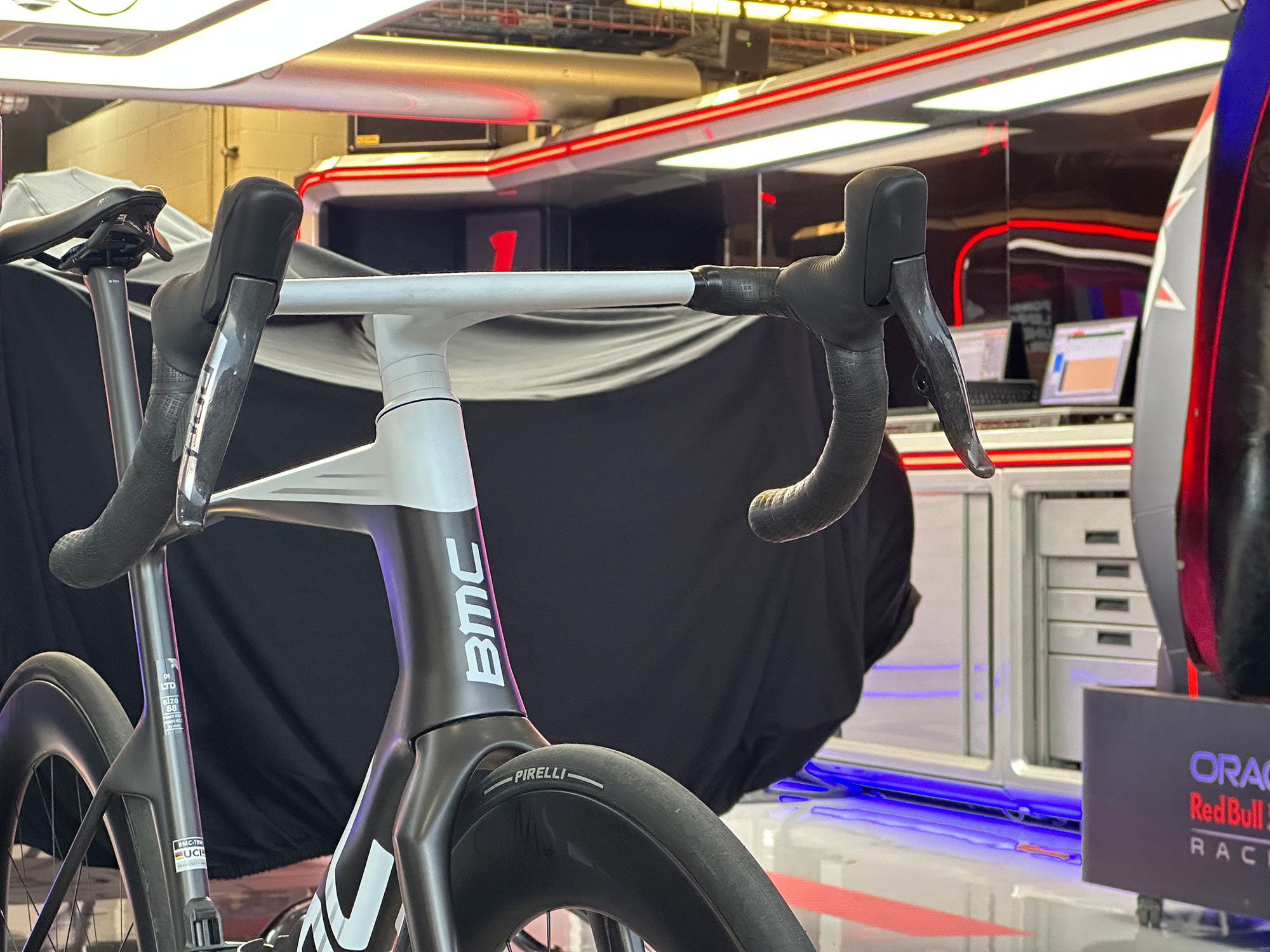
While BMC isn’t calling it an “aero bike”, it is indeed a race bike that happens to be very aerodynamic.
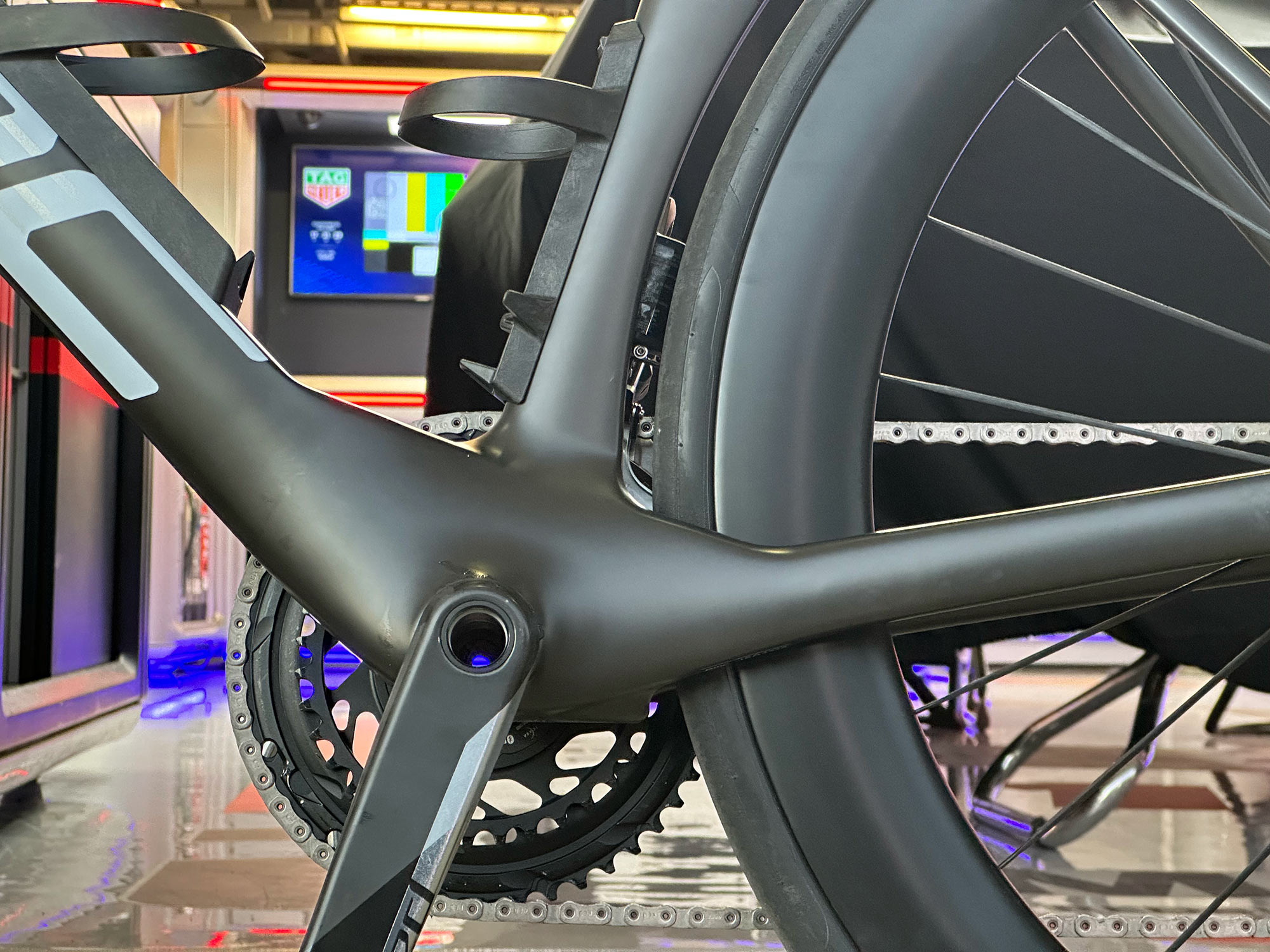
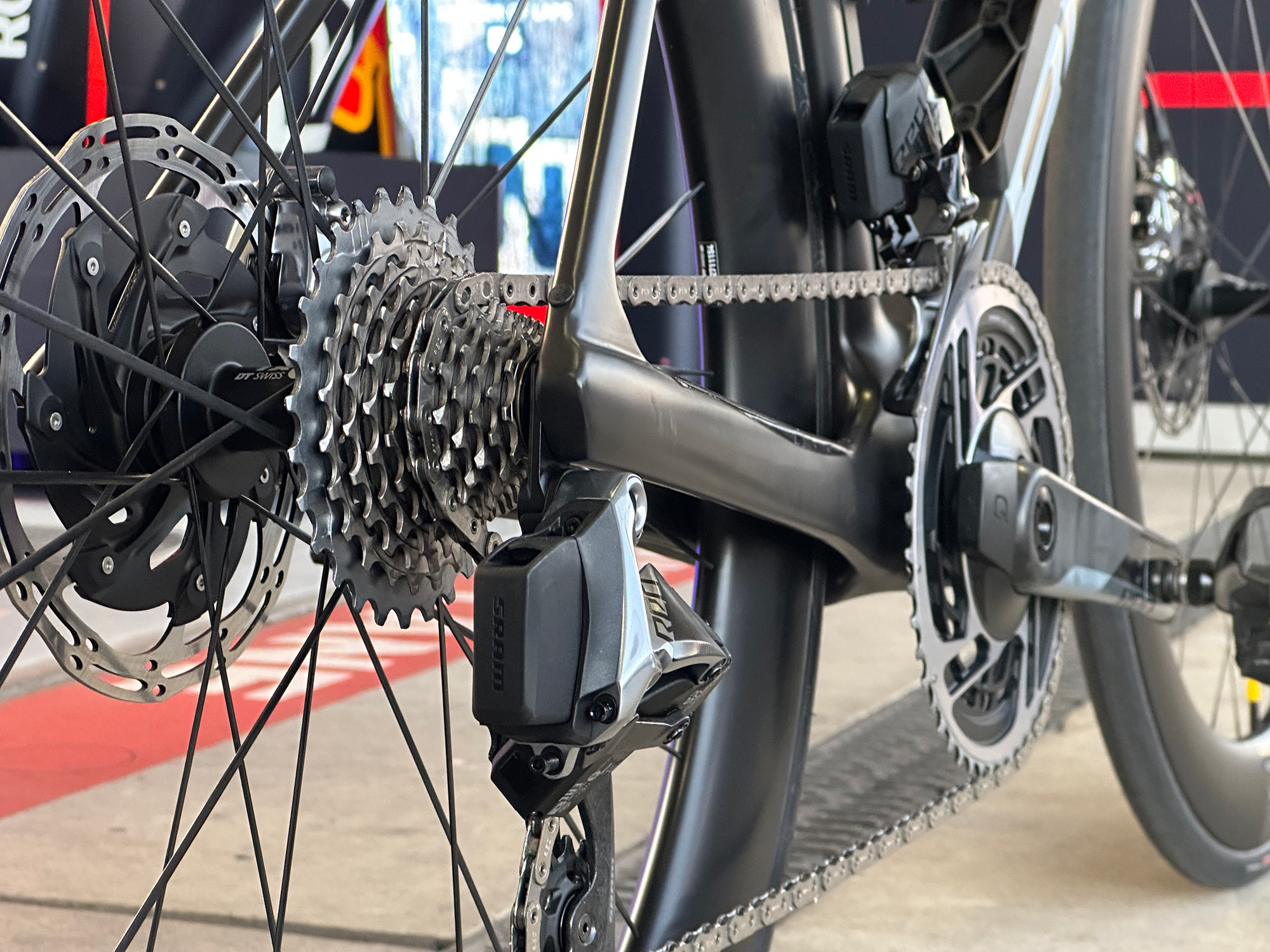
Full tech details are in our launch coverage, but the key aero features are:
- Slim headtube and frontal profile
- Extremely wide spacing between fork leg and spokes
- Deep, long bottom bracket section
- Integrated bottle cage that shapes airflow over water bottles
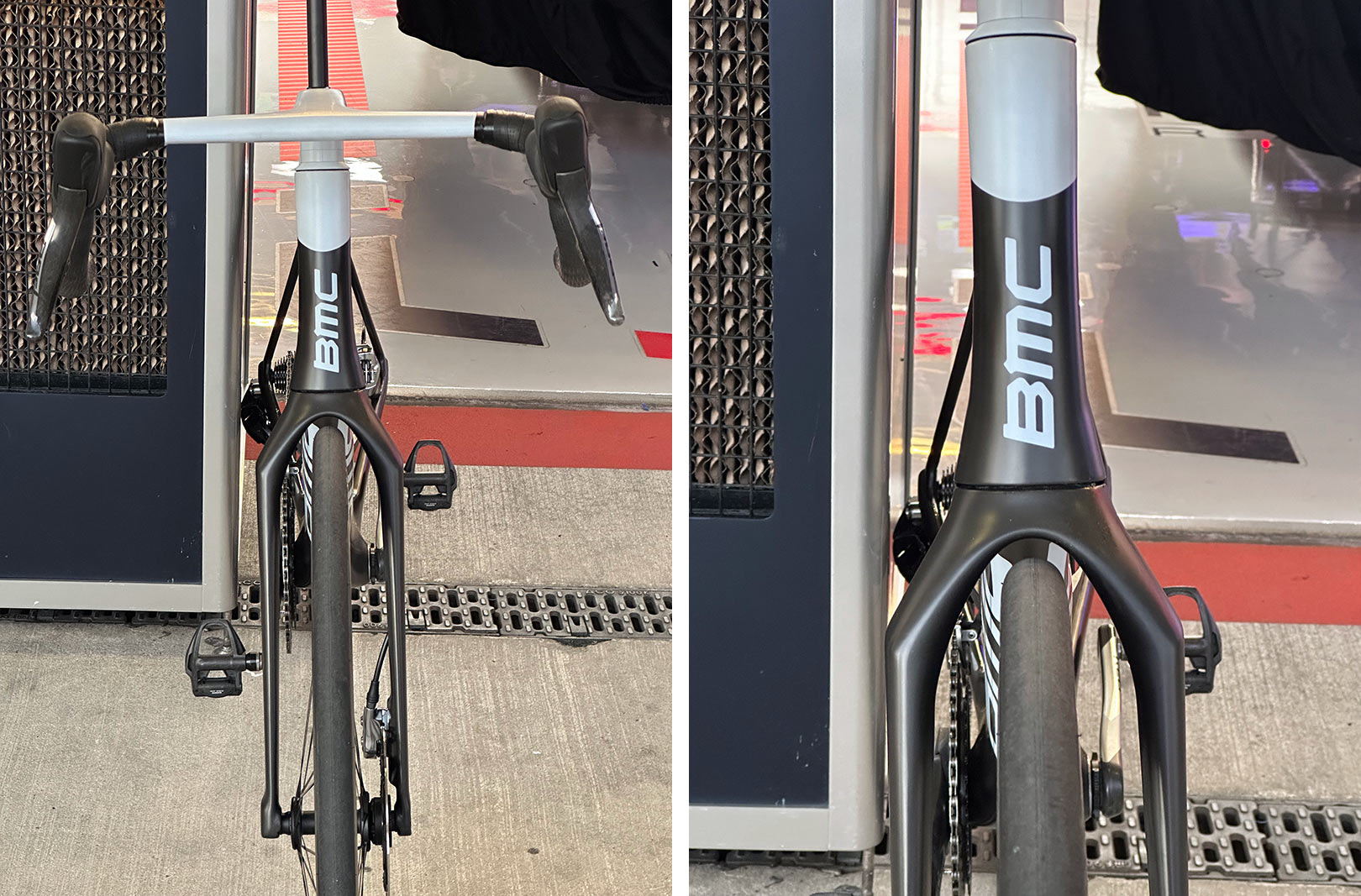
They say with the fork, you either want to be extremely close to the wheel and tire, or really far from it. It’s safer and easier to go wide, and that allows more rim and tire compatibility.
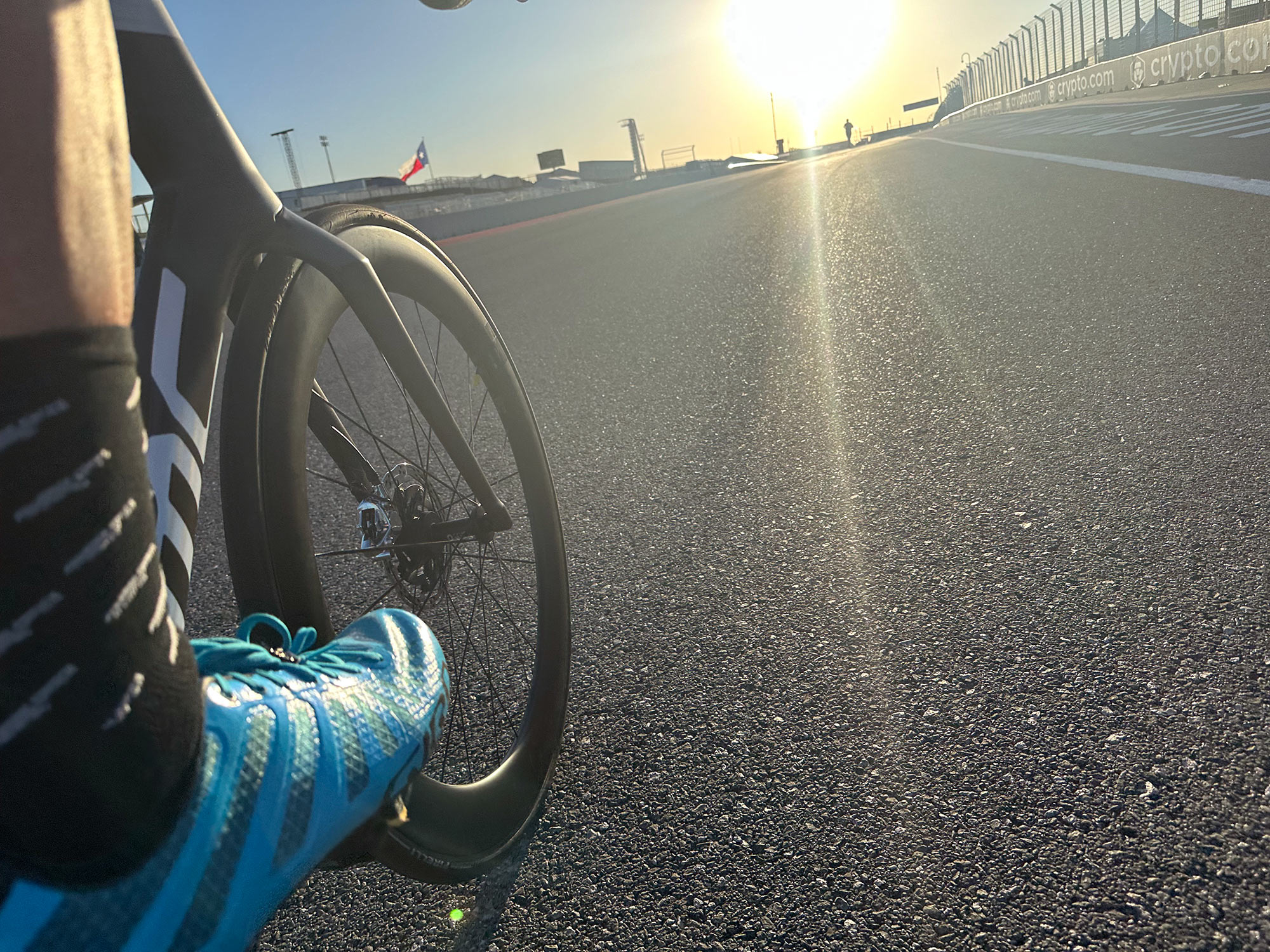
They spec a 1700g wheelset with 62mm deep rims, so you could go lighter, but they chose these specifically for the aerodynamics.
The bike is also really light, only ~50g heavier than the SLR. Claimed frame weight is 910g with a 345g fork. They did this by reducing overlap between plies with more custom-cut pieces of carbon, using less where it’s not needed and a little more in the head tube and BB area for improved stiffness.
BMC Teammachine R ride review
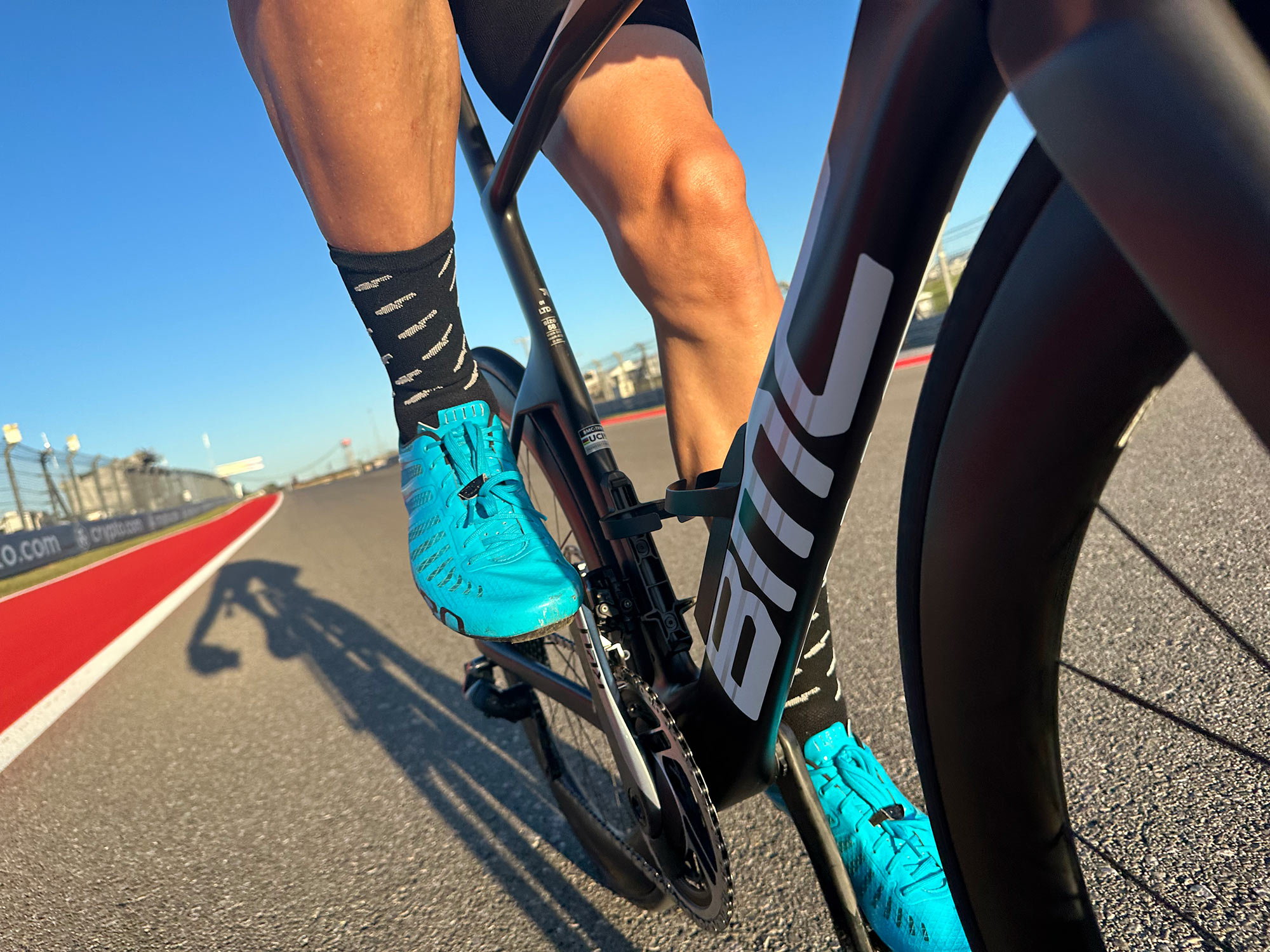
The Circuit of the Americas track is an excellent testing ground for this bike. Each 3.4 mile lap has 20 turns, one big punchy climb, and what seemed like a constant headwind. Powering down the straightaways, standing to hammer up the climb, or diving into corners and S-curves were all great. It’s stiff, efficient, and handles great, as I’d expect from a race bike costing $14,999 in top trim. (Complete bikes start at $9,199, frameset with cockpit is $5,999)
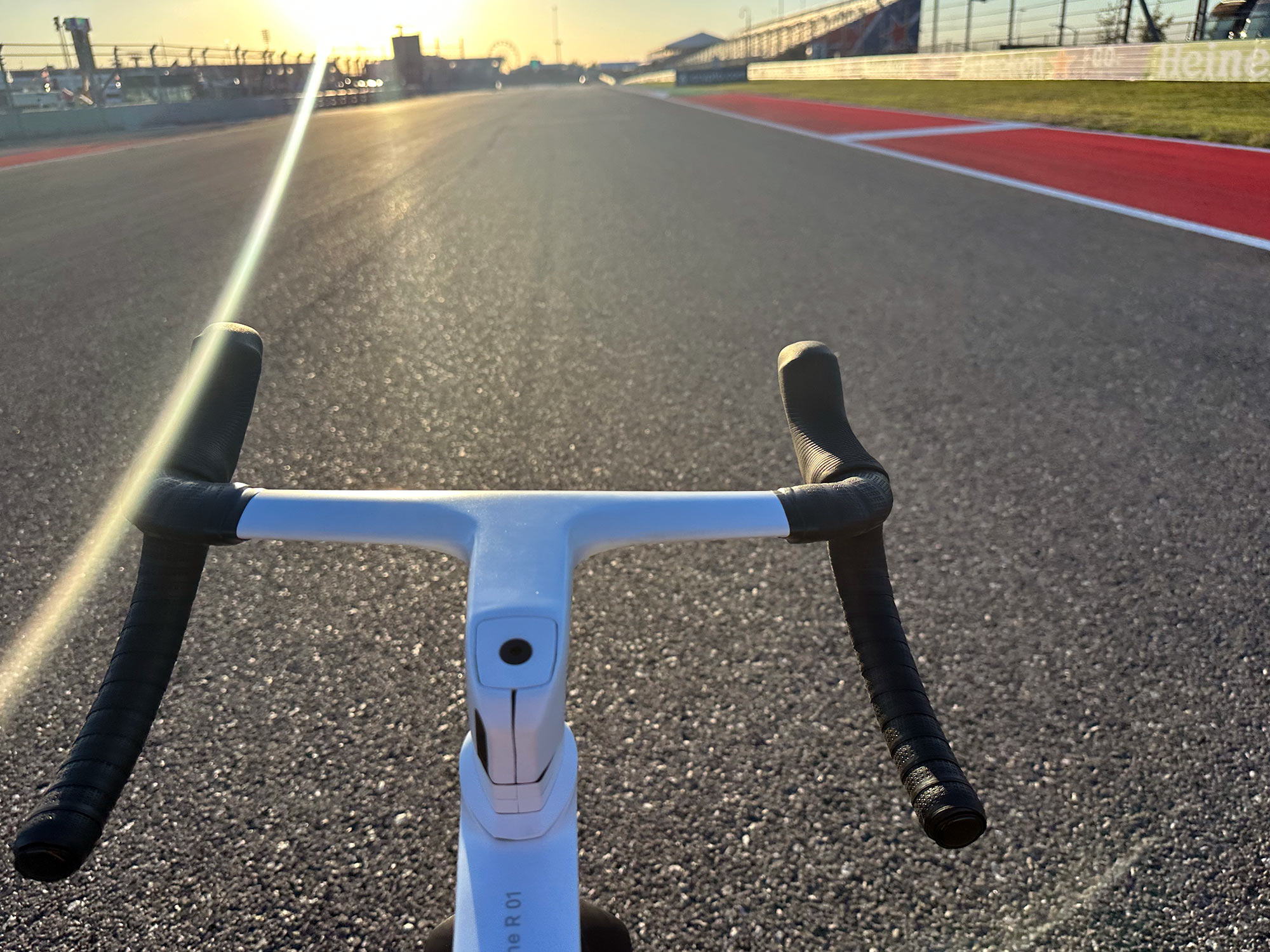
Whether drafting others (or flatbed tractor-trailers with tourists on the back) or pushing past them for a solo effort, the bike clearly likes to cheat the wind.
As BMC’s own numbers suggest, though, the rider is still the biggest source of drag. So they gave the bike very narrow handlebars. All size frame sizes, from 47 to 61, come with the same one-piece bar stem measuring 360mm wide at the hoods. It flares to 420mm in the drops.
The point is to keep a rider’s arms narrower, creating a smaller frontal profile. As a bigger rider with broader shoulders who typically rides 440mm wide handlebars, I was surprised that this didn’t bother me. At least not given the bike’s intent. Were I buying this for all-day riding and training, I’d want something wider. But for racing, this spec makes a lot of sense and wasn’t uncomfortable.
Smooth Off Track Too
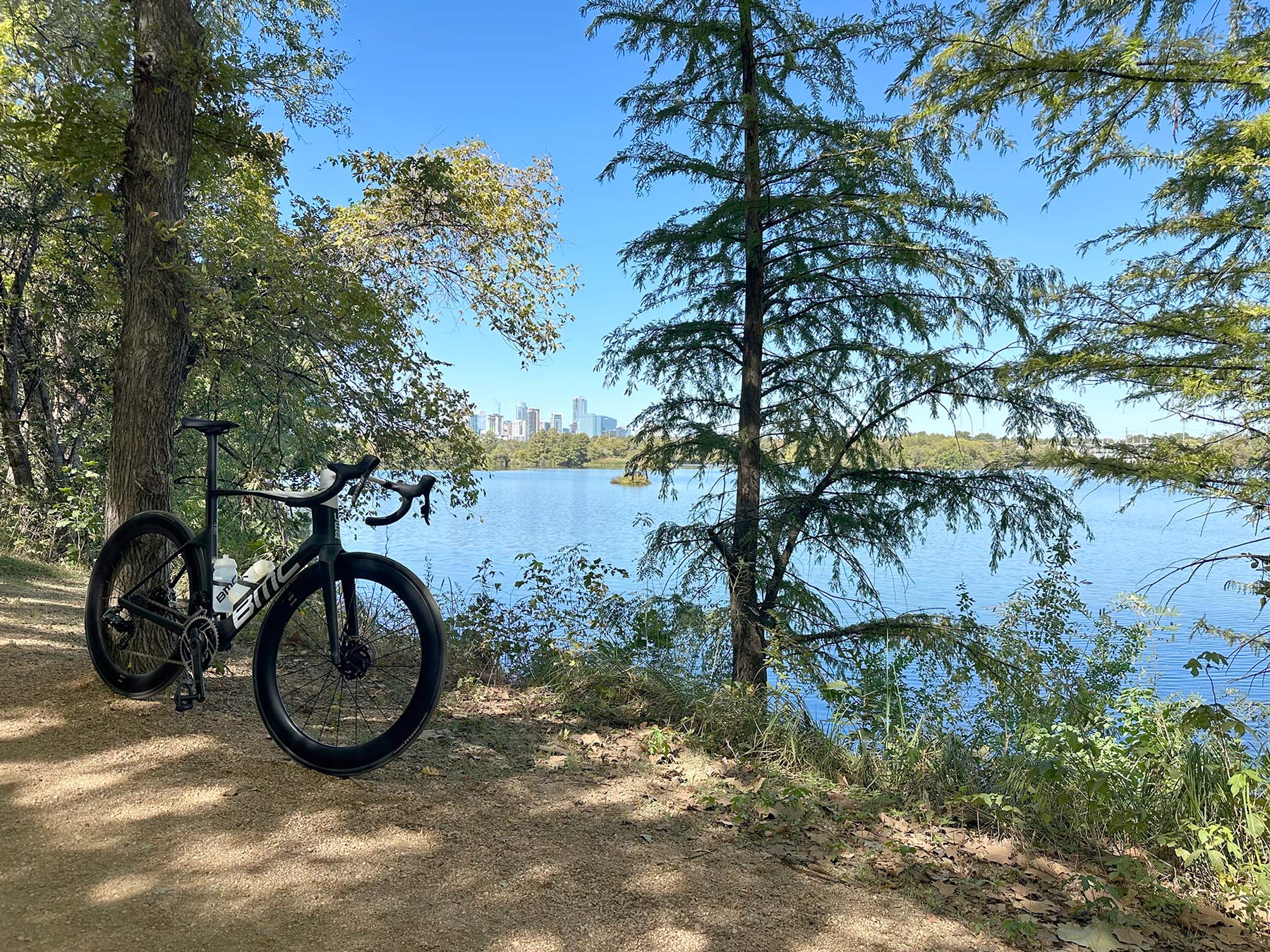
What surprised me about the Teammachine R is how well it rode once I got off the perfectly smooth asphalt of a Formula One race track. I took it for a late morning ride out of downtown Austin, where the roads are less than perfect. Potholes, construction zones, and city streets. And then a less congested ride along their bike paths straddling the Colorado River.
With loose scrabble to hard-packed dirt, the trail is the kind of thing I’d normally take an all-road or gravel bike on. But the Teammachine R, for all of its stiff hi-mod carbon, didn’t beat me up. If their team wanted something that could handle cobbles, this was the closest I got to suggest BMC delivered. The only limitation for mere mortals like me is its claimed 30mm tire clearance. However that seems to be the preferred size for the pros racing Paris-Roubaix, so… it’s fine.
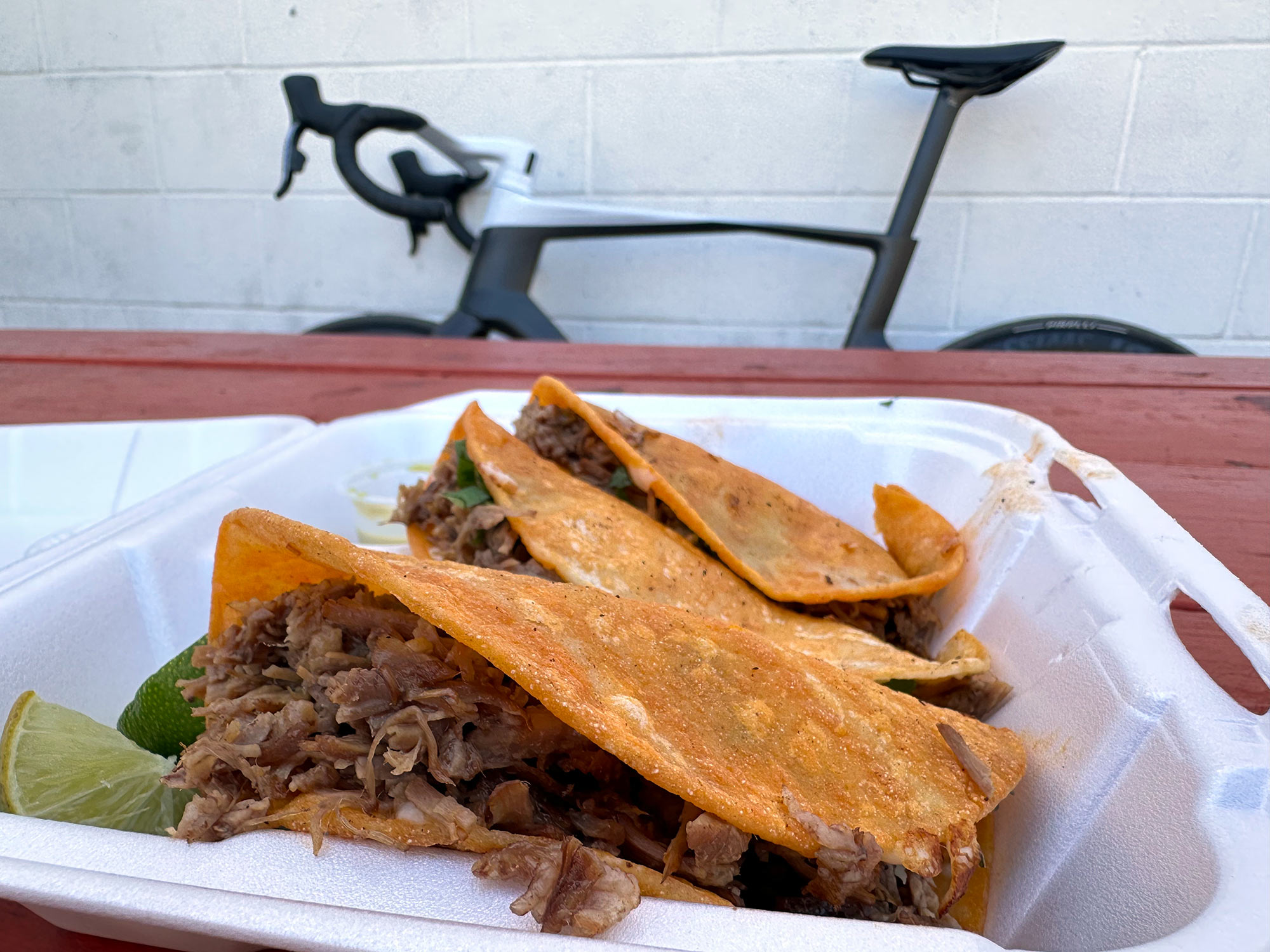
If you’re looking for a purpose-built all-around race bike that doesn’t skimp on any of the three key criteria (aerodynamics, weight, ride quality), the BMC Teammachine R is worth a look. It’s even fine with the post-ride taco truck stop, which earns it an extra nod from me.
